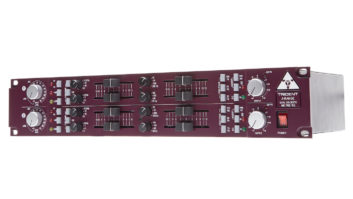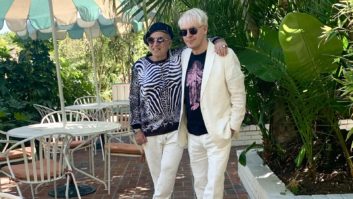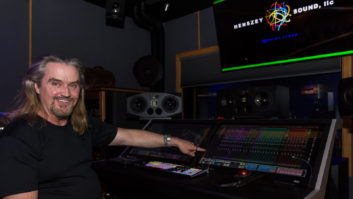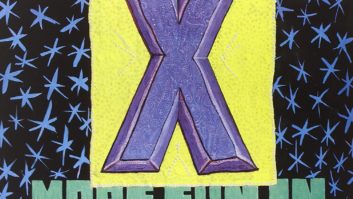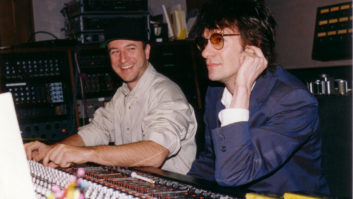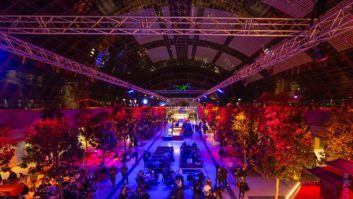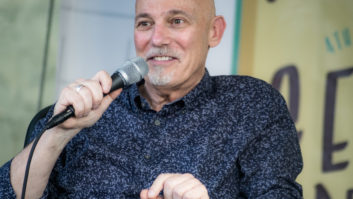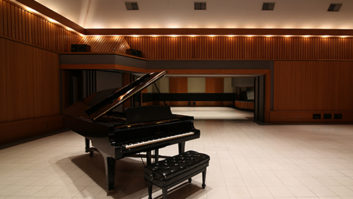West Hollywood’s five-room Cherokee Studios has a rich 30-year history, a thriving present and a promising future. Its owners, three musician/engineer/producers who also happen to be brothers, have always bucked trends, from building — way back in the day — one of the first home studios, to the distinctive equipment choices that they’ve made over the years. Along the way, Cherokee has developed a loyal and diverse clientele that includes the freethinking, independent sort, like filmmaker/composer John Carpenter, musician/spoken-word artist Henry Rollins and the enigmatic Morrissey.
Dee, Bruce and Joe Robb started out as performing artists, first backing up Del Shannon, then on their own as The Robbs. In the early ’70s, the three were recording for ABC Dunhill and living on a horse ranch in rural Chatsworth, when, with audiophile extraordinaire Roger Nichols as technical mentor, they got their introduction to the studio business.
“We started playing country rock-style music, changed the band’s name to Cherokee, and were preparing for an album,” recalls Dee Robb. “But at the time, ABC Dunhill’s studio was always booked. We couldn’t get in to do our demos. Roger, who was chief technical engineer at ABC, had become a good friend and was hanging out at the ranch a lot. He suggested that we buy some recording gear and put it in the barn. Then he found us an Ampex 4-track, and that’s how it started.”
The studio made the gradual progression from four to 24 tracks, and the Robbs made the gradual progression into producing and engineering for other artists, beginning with their old friend Del Shannon, who lived nearby and whose single “What’s the Matter Baby” became the first non-Robb recording made at the studio.
Not long after, Nichols brought Steely Dan to the ranch to record what became their pop masterpiece, Pretzel Logic. “At that point, we knew we were in the studio business,” Robb says with a laugh. “It just kind of happened. For example, we never named the studio. Our friends just referred to it as Cherokee’s Ranch. And we never made a decision to stop performing as a band. We just realized that we were in the studio all the time instead of touring. After Pretzel, I worked with Rick Nelson and ended up producing him, then Jeff Lynne and ELO were working at the studio. We had some fairly serious clients, and we started looking for a bigger facility.”
In January 1975, Cherokee took over what had been MGM’s studios on Fairfax Boulevard, a block north of the Melrose District, where Studio 1, the complex’s largest, was the first ever Tom Hidley-designed room. Meanwhile, the brothers became enamored with a certain kind of British sound that directed them to Trident Studios in London, then the home of custom, in-house built consoles. A dialog began between Cherokee and Trident, and at the end of ’75, the Robbs took possession of the first Trident A-Range desks to hit America.
Artists including Rod Stewart, David Bowie and Frank Sinatra made now-classic records on that 80-input A-Range, which currently resides in Cherokee’s Studio 3. Two other versions of the Trident followed in Studio 1. It wasn’t until 2001 that the Robbs found a console that they thought could take their place: an 80-channel, all-discrete API Legacy Plus, with dual inputs and full dynamics, four direct box modules, 12 sends per channel, three stereo buses and a stereo compressor, with faders and switches automated by API Mix Plus.
“We brought in channel strips from virtually every console out there,” says Robb, “and did blind A/B tests with live program material. We wanted a pristine signal path with as little phase degradation as possible, so we did it very simple. The only console that excited us was the API. And the great thing about it is that the Legacy Plus, besides having a great sound, has the features the A-Range didn’t. We kept the high sonic standards and gained functionality, and we’re thrilled to have achieved that.”
Another major upgrade ensued at the facility in 2001. Studio 2 was completely redesigned, from the ground up, by George Augspurger for 5.1 surround capability and now features an SSL 4096 G Plus console. Studio 4 houses a second custom 48-input Trident A-Range with a 24-channel sidecar, and Studio 5, also a 5.1 room, features an Otari Advanta 96-channel digital console. Monitoring in all studios is Augspurger-designed with JBL components. Both analog and digital (RADAR and Pro Tools) recording is available, and Cherokee’s gear and microphone lists — as long as one might expect from a studio with a 30-year history — feature both vintage and new brands.
Cherokee’s client list continues to be cross-genre. Past credits read like a Who’s Who of the industry, including Jane’s Addiction, Aerosmith, Devo, The Go-Go’s, Dave Matthews Band, Lenny Kravitz, Public Enemy, Cypress Hill, Diana Ross and Al Green. Recent projects have included producers Matt Hyde with Slayer, Roy Thomas Baker with Guns N’ Roses, Walter “A” Afanasieff with Robi Rosa, Toby Wright with Tantric, and producer/engineer Andy Johns with The Cult.
